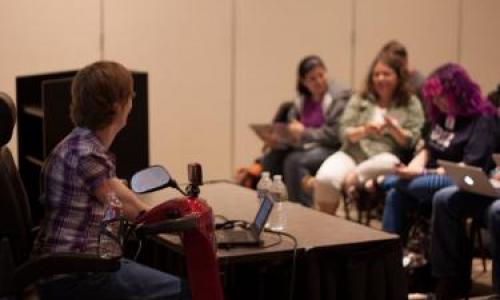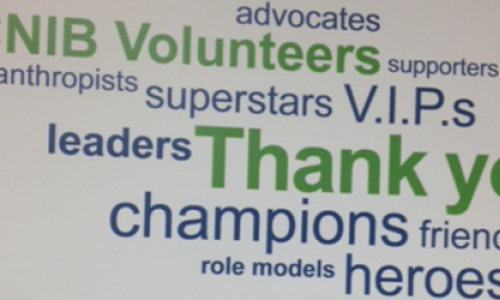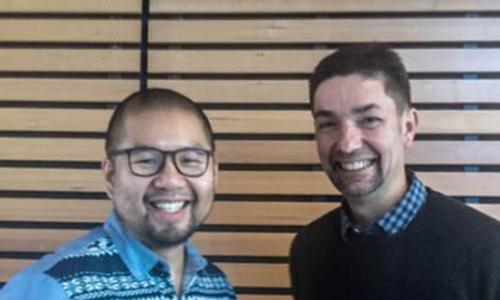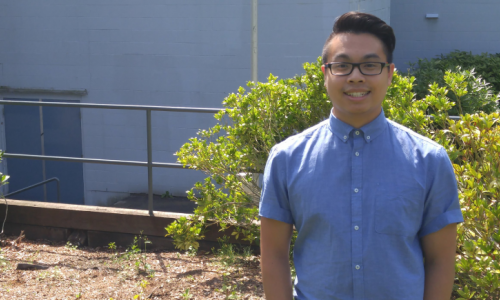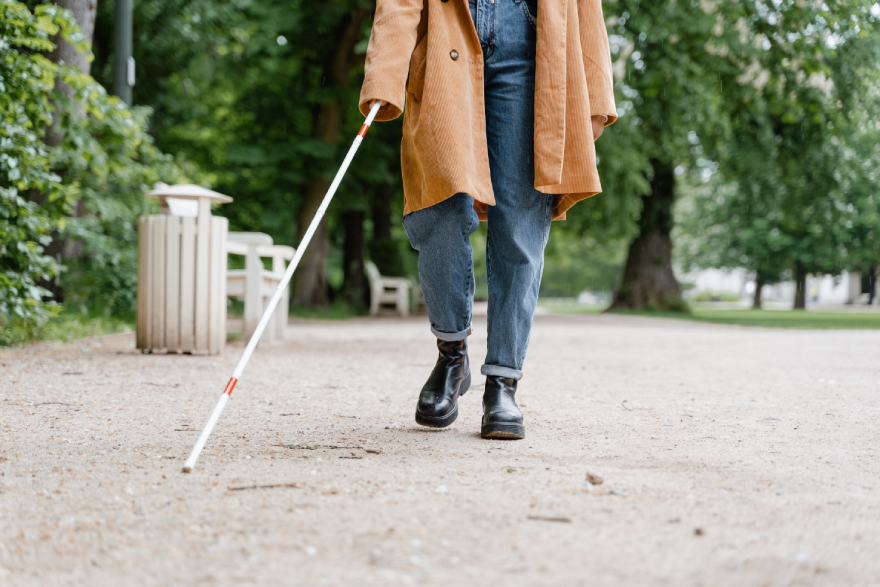
Note to Readers: This is just one perspective of visual impairment, each blind person is unique with their own stories, and should not be assumed to be exactly the same simply because of a disability.
Being a new student at Simon Fraser University brings on many new experiences and challenges, but for me, that means something a little different. I am blind, and being a person who lives with a permanent physical disability I tend to do things in more of an adapted way, based on my visual impairment. The biggest takeaway I want people to have from my story is that I am simply just like any other student. I manage a full course load, attend lectures, complain about homework and exams, and become enveloped in the stress and struggles of a semester just like anyone else.
As we all know, starting at a new university and moving away from home for the first time are all challenges we have had to experience in order to further our education and develop careers. However, my experience is slightly different; I am fully blind, which puts a whole new twist on university life. My story begins when my identical twin sister and I were born. We were three months premature, resulting in me developing an eye condition called Retinopathy of Prematurity, which “occurs when abnormal blood vessels grow and spread through the retina, eventually leading to retinal detachment”. (Haywood-Lunn, 2013, p. 742). My retina detached was in my left eye and the doctors didn’t catch it in time, resulting in total blindness.
However, my right eye had high-functioning vision; the only limitations with my remaining sight were bad depth perception, light sensitivity, I had to read large print and I had 20/200 visual acuity. This meant that something a fully sighted person would see at 200 feet, I had to be 20 feet away to see it clearly. I managed quite well with my low vision, but when I was fourteen, my retina partially detached in my right eye. I had multiple surgeries to attempt to reattach it, but unfortunately, due to the amount of trauma my eye underwent, I lost all remaining sight and I am fully blind in both eyes. Since I am now fully blind, I use what is called a white mobility cane. To most, it is just known as a white stick that hits them in the ankles as I walk past. Just so we’re clear, that is never my intention! To use the cane, there is a proper technique – when holding the cane, you move it side to side using mainly your wrist and you should have the cane arcing the width of your shoulders to ensure full coverage of your body so you don’t run into things or fall over unseen obstacles. We are usually taught how to use the cane at a young age, but I didn’t need the mobility cane until later on in life. The technique might sound simple, but it takes a lot of practice and confidence to perfect.
One challenge I have discovered at SFU is that navigating the campus is confusing and complicated at the best of times, and it definitely takes more than just the cane technique. Basically getting around anywhere as a blind person, there are multiple factors to consider. An additional tool I use is my visual memory, which allows me to picture things in my head easily from having seen them before. This works very well when I am learning a new route. I can also hire individuals called Orientation and Mobility Instructors (O&M) who are trained to teach visually impaired people proper cane techniques, how to travel safely and independently and work on routes. I first inform them of the route I want to learn, they explore it on their own and find the safest and easiest way for me to be able to do it independently. The Orientation and Mobility instructor will then describe it to me.
Once I get a solid picture in my head, we will walk the route together anywhere from only once to multiple times depending on the complexity of the route. Having an O&M instructor working with me to ensure I know the route helps with being confident, and reassures me that I can be independent which is one of the biggest goals to achieve for a visually impaired person! Another tool I utilize are landmarks. The instructor will show me a series of landmarks such as a water fountain in a courtyard, the sounds from a radio station's outdoor speakers, or the floor mats by an exit door. I use these specific things to make sure I am going in the right direction or to correct myself if I get a little turned around. These help immensely to give me a sense of direction. However, it is very important to use landmarks that will not move, because if I rely on a landmark to help me figure out where I’m going and it gets moved, I will instantly become disoriented. You can see exactly how important and reassuring they truly are.
As you can see, navigating any area, let alone a university campus, as a visually-impaired person brings many new difficulties. I have found that there are times when you have to put aside any thoughts of slight panic or worry about getting lost, and embrace your adventurous side because when you reach your destination all on your own, that feeling of accomplishment and pride gives you an entirely new vote of confidence and independence you sometimes forget you have. One small victory towards conquering the crowded, confusing, and busy campus gives you the realization that you can do this, you can be independent and do anything anyone else can, just with a slightly different set of skills. Being able to travel the campus on my own is a goal I have set from the very beginning of my time at SFU, and I believe that I have carved quite a significant dent into that goal. Forvgoing through everything I did with losing my sight, being able to work towards my degree independently is something I will always be extremely proud of!









